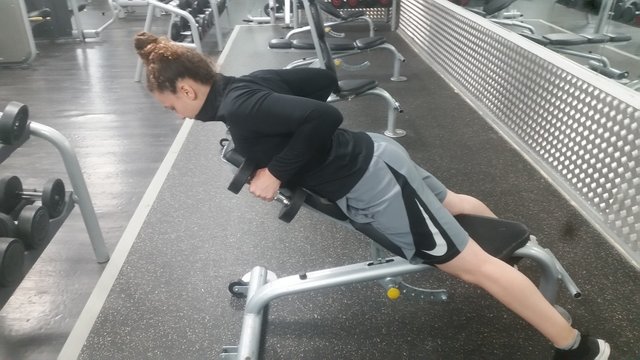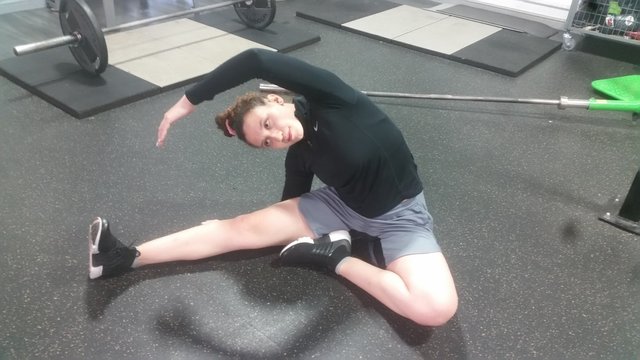Many of us focus on our biggest muscles when training, for example, back, legs, chest. However, neglecting smaller muscles is not something you want to do. Often these smaller muscles play a much bigger role than you think and could affect the bigger muscles that you are trying to strengthen or grow.
Below I am going to list 5 important muscles that I find are often neglected, why they are important to train and good exercises for them.
- Rhomboids

These muscles, although very small compared to other upper back muscles, play a very important job in your posture. Their function is to retract the shoulder blade. If these muscles are strong, they will prevent thoracic kyphosis that comes along with this technology obsessed world... but that is another discussion entirely.

Laying on your stomach on a bench, arms extended with selected dumbbells, bring the dumbbells up to your chest so your elbows come up and from the side look like bat wings, then slowly lower and repeat for your desired reps.

How to perform:
Grab opposite elbows with your hands, so your arms are in a box position.
Pull your elbows forward, feeling your shoulder blades pull apart and a stretch in the upper back (rhomboids), hold for desired time.
- Lower back
While we are on the subject of the back, lets discuss the lower back as this is anther muscle that is often neglected.
So what do our lower back muscles consist of? The 3 main muscles are:
- Erector spinae.
- Quadratus lumborum (QL)
- External and interal oblique.
Our lower back is very important as its a core muscle and core muscles help keep your body stable and posture correct. Its function is to bend, rotate and extend the waist.
A great exercise for the lower back is the superman. There are a few different ways of performing this exercise, one is by laying on the floor, just body weight, playing around with how long you hold it for, another is doing it on a stability ball, this will target the core as well as the lower back, again body weight and changing it up with lengths of holds and reps. Again you can use this exercise in your back day, in a circuit and even can include it in a home workout because you don't need equipment for it.

- Glute medius
The glute medius muscles are located at the top part of your bum on the outer regions, it is the second biggest glute muscle and helps with abduction of the hip. A lot of the time the glute medius is weak and this can cause other issues in the body such as knee problems and muscle tightness.
A great exercise for the glute medius is side lying clam, this can be performed with a resistance band (placed above the knees) or body weight. Lying on your side, knees slightly bent and with legs and feet together. Open up your legs until you feel your upper body moving to help, once open you will notice the clam like shape of your legs. Then reverse this. Try and keep the movement slow and controlled.
A great static stretch for the glute medius is the pigeon:
Sitting down on a mat .
Bring one knee forward up to the edge of the mat.
Stretch the other leg back behind you.
Align the foot of the bent leg with your knee (they should be perpendicular to the leg stretched behind you)
Lean forward if you can.
- Tibialis anterior
The tibilais anterior is located in front of the shinbone, its function is upward flexion of the feet, extension of the toes and inversion of the ankle.

One end of the resistance band tied to a sturdy object close to the floor and the other end around one of your feet, close to your toes. Sit facing the object, but far enough that the band is in tension, with your toes pointing forward. flex your ankle to stretch the band more and then return to the starting position. Repeat for desired reps and swap feet.

- Rear deltoid
The rear deltoid refers to the rear-head of the three-headed deltoid muscle. its function is to move the shoulder into horizontal abduction. The reason why this muscle is on my list is because again it is a muscle that helps to maintain correct posture (key theme in my post), by helping reduce the 'rounded shoulder' look in particular. By strengthening the rear deltoids you pull your shoulders back, meaning you will look less hunched over. This is important as in my experience this is one of the causes for a hunched over posture which can lead to further issues such as shoulder injuries due to posture being off balance.
A great exercise for the rear deltoids is reverse dumbbell flyes. You can do this exercise using a range of different resistance and equipment, like the cable, on a bench and more. A great static stretch for the rear deltiods is the posterior shoulder stretch.
So there is the list of my 5 muscles I think are most often left out of workouts. Let me know in the comments if you think I have left any muscles out or if you agree with the 5 I have chosen and feel free to share.